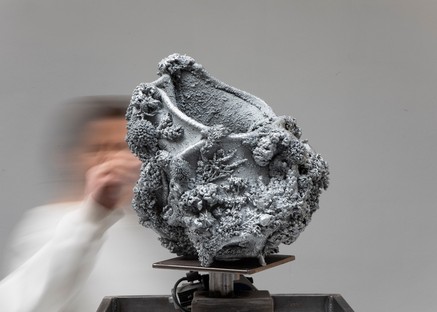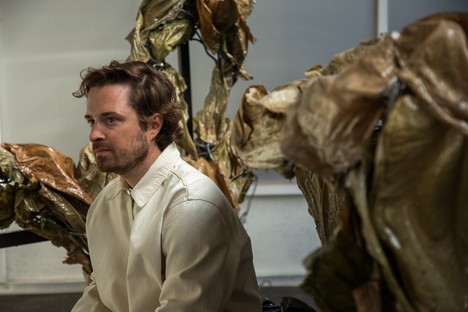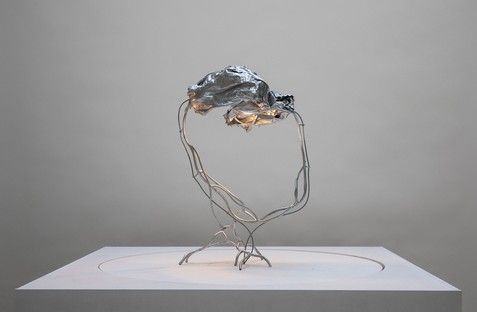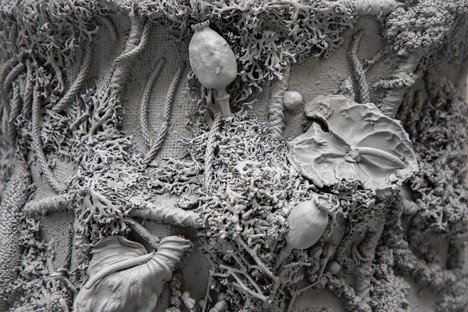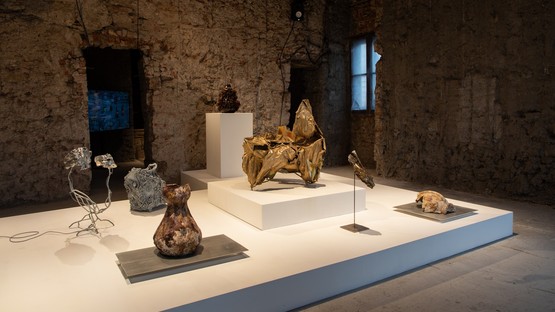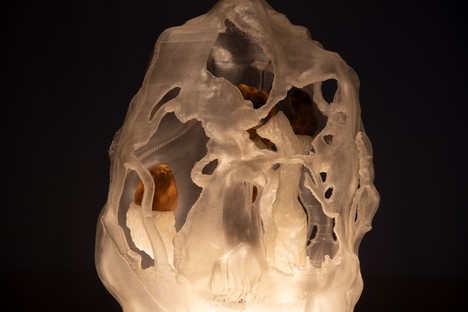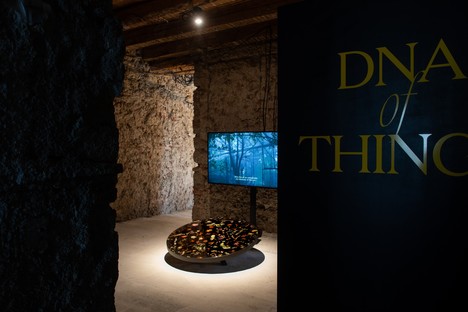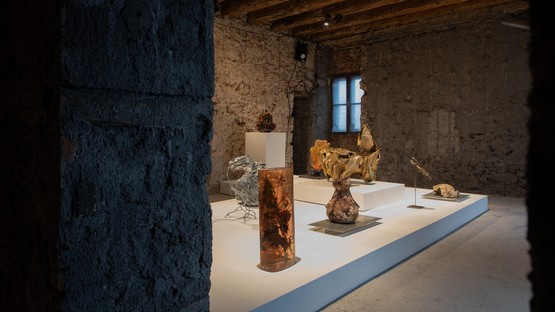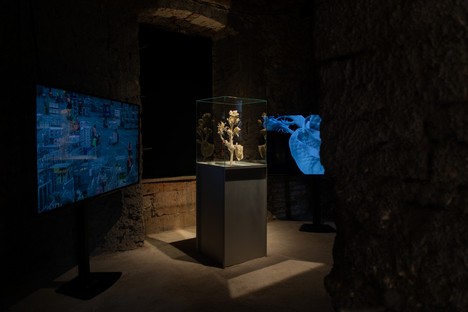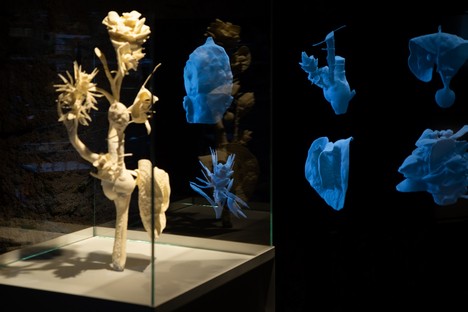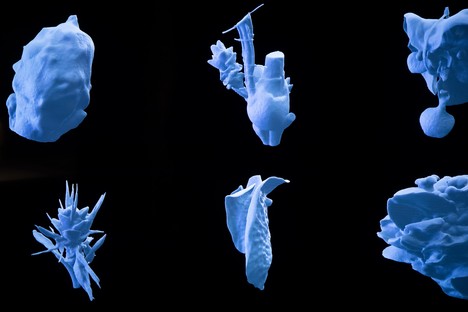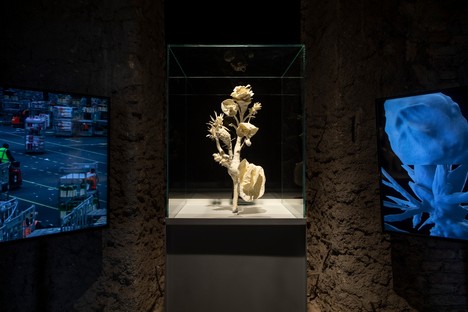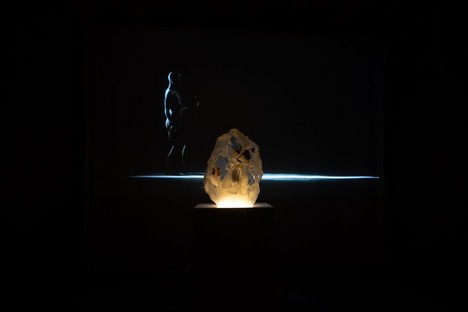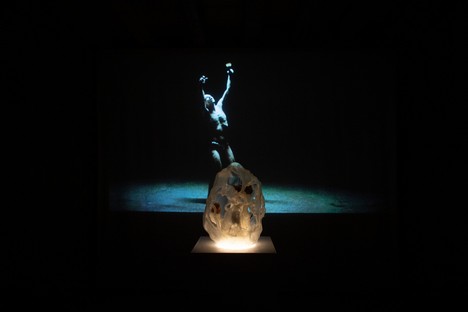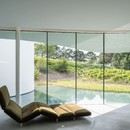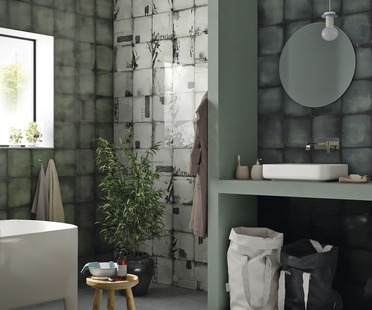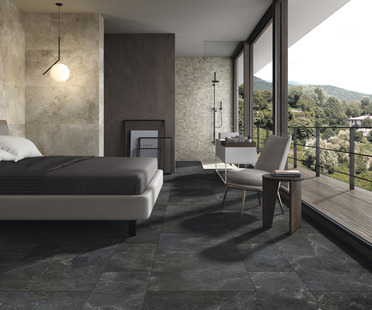
His entire story is rooted in his family history: Marcin Rusak, born in 1987 in Poland, grew up near Warsaw, where his father and grandfather grew flowers for the wholesale trade. But Marcin only became familiar with this business as it was on the brink of failure, a tangle of abandoned greenhouses overgrown with weeds. Whilst training as a designer in London, a young Rusak set about working on the idea of decay and deterioration that he had witnessed first-hand during his childhood: nature produces incredibly spectacular, colourful and diverse materials which ineluctably transform, evolve and wither away. As such, his research has focused on the ways of using these materials to produce objects and works of art, seeking to crystallise their beauty - to freeze it, almost, in a snapshot capable of slowing its decline.
Hence his first series of vases, the so-called ‘Perishable Vases’, made of natural resins encapsulating plants and flowers which, inevitably, undergo changes with the passage of time. During a 2016 group exhibition in London, Marcin Rusak was discovered by Milanese curator Federica Sala, who presented him in his own showcase in 2021, ‘Unnatural Practice’, held at Ordet, the contemporary art promotion centre on Via Adige directed by Edoardo Bonaspetti and Stefano Cernuschi. Since his ‘Perishable Vases’, Rusak’s work has evolved immensely, with the artist perfecting his production methods and broadening his horizon of applications: flowers and leaves, which he salvages from the unused leftovers of the flower trade, are dried in special cabinets before being arranged on metal structures and canvases spray-coated with liquid metals or encased in natural and artificial resins. Such as in the ‘Flora’ series, which includes cabinets, tables, sideboards and lamps made of black, white or transparent resin and displayed in some of the most prestigious galleries around the world (including the Twenty First Gallery in New York and the Carwan Gallery in Athens, to name but a few).
Over the next few months until 2 October, Marcin Rusak’s works and research are featuring in a show entitled ‘DNA of Things’, again curated by Federica Sala and hosted at the Cukrarna Palace in Ljubljana as part of BIO27, the 27th Biennial of Design. “The roots of this exhibition lie in the one held at Ordet in Milan, though it is an evolution of it,” Federica tells me, “as the space hosting it is different and Marcin Rusak’s work itself has grown immeasurably richer. The designer does much more than simply assemble natural materials: he gives life to forms that do not exist in nature, but using the materials that nature itself provides him with. In his ‘Protoplasting Nature’ collection, for example, he uses existing plant matter and makes it ‘sparkle’ by spraying it with metals - aluminium, brass, bronze, etc. - almost freezing the leaves in the moment and transforming them into structural elements. His bronze tables, for example, have a profoundly natural core beneath the metal surface”.
Rusak is a figure who stands somewhere between science and design: the study of plant matter is a fundamental element of his design process, which results in pieces created for artistic enjoyment, but also collectors’ furniture in which time plays a transformative role, as is the case with all objects made from organic materials. But it seems that for Marcin Rusak, time is not merely an ‘inevitable accident’, but rather a main source of inspiration, a force that brings about evolution and decay, both captured and suspended in his works. The designer’s most recent show has seen him push the concept even further: “He has opened up a reflection on the DNA of plants,” explains the curator, “hence the title of the exhibition: indeed, one of the various pieces on show is a kind of ovoid shell made of biodegradable plastic which contains real flowers with strings of DNA that have been digitally modified to store data and information. A time capsule of sorts, an object straight out of a sci-fi film that represents a warning against the reckless use of our natural and plant heritage for purely human purposes”. A warning which, unfortunately, rings all too true today.
Antonella Galli
Captions and credits
The show entitled ‘DNA of Things’, featuring Marcin Rusak’s work and curated by Federica Sala, is taking place in Ljubljana (Slovenia) at the Cukrarna Palace as part of BIO27, the 27th Biennial of Design, until 2 October 2022. Images courtesy of Marcin Rusak Studio
01 and 04 Marcin Rusak, Tephra Vase: vase made of treated flowers, burlap and liquid metal; photos Marcin Rusak Studio
02 Marcin Rusak, photo Kasia Bielska
03 Marcin Rusak, Protoplasting Nature, Encoded Symbols: light-up sculptures made from leaves, steel and zinc.
05, 07, 08 DNA of Things, Installation View, photos Marcin Rusak Studio
06, 13, 14 DNA of Things, 2022: 3D-printed biodegradable plastic, resin, real flowers
09-12 Monster Flower I, made of 3D-printed nylon, and two video installations














